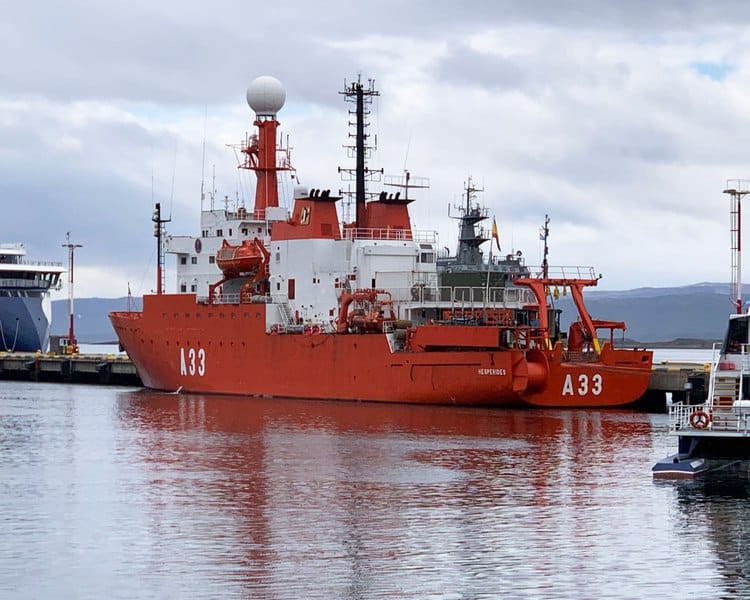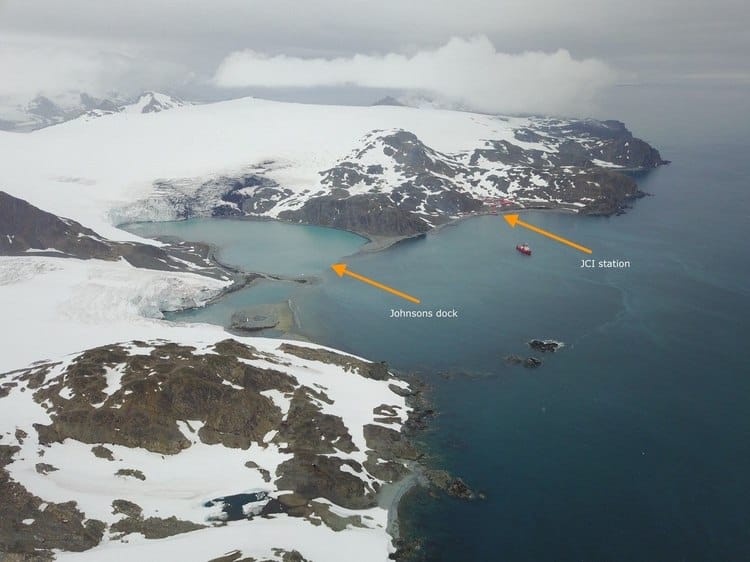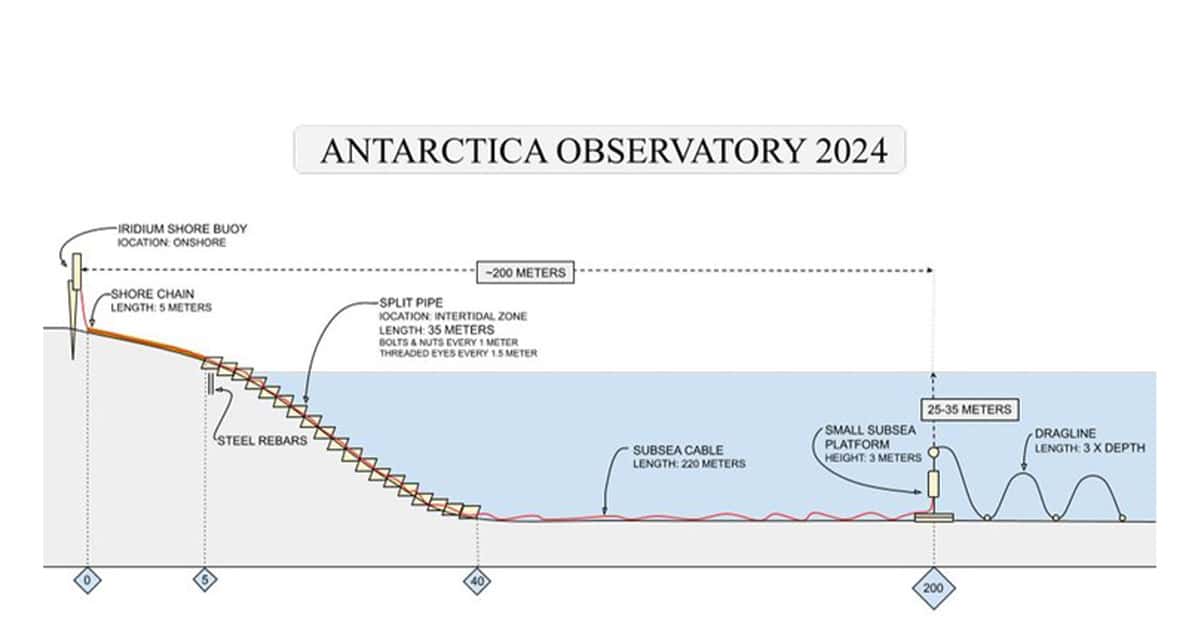This partnership between ONC, a University of Victoria initiative, and the Spanish National Research Council (CSIC) will advance scientific understanding of one of the most underobserved parts of the planet, the Southern Ocean, or the Antarctic Ocean.
The Spanish polar research vessel Hespérides that is transporting the ONC observatory is enroute to the Spanish Antarctic Station (BAE), Juan Carlos I, located on Livingston Island in the South Shetlands Archipelago that is north of the Antarctic Peninsula. It is also carrying two ONC deep-sea Argo floats that will be deployed during transit in the Drake Passage in the Southern Ocean.
 Spanish polar research vessel, BIO Hespérides enroute to San Carlos I, docked at Ushuaia in Argentina, January 2024. (Image credit: Jordi Sorribas Cervantes)
Spanish polar research vessel, BIO Hespérides enroute to San Carlos I, docked at Ushuaia in Argentina, January 2024. (Image credit: Jordi Sorribas Cervantes)
The Hespérides, which departed Barcelona last fall, is scheduled to depart the Argentina port at Ushuaia this week and reach BAE Juan Carlos I in Antarctica later this month.
ONC President and Chief Executive Officer Kate Moran says this partnership marks a tremendous milestone in polar scientific collaboration. “Ocean Networks Canada has been monitoring Arctic conditions since 2012 through its network of Indigenous community-led and remote coastal observatories that provide continuous ocean data, available to all, through the Oceans 3.0 data portal on the ONC website,” she says.
“ONC’s expertise in designing and successfully operating underwater observatories able to withstand harsh polar conditions will contribute to Spain’s scientific expertise in monitoring Antarctica, a continent that is critical to this planet’s climate system, and is undergoing rapid, consequential changes that we need to understand,” Kate Moran, ONC President and CEO
The announcement from ONC and CSIC follows a recent call for the urgent expansion of ocean monitoring in the Southern Ocean. In a joint statement released at the 2023 Southern Ocean Observing System (SOOS) Symposium, 300 scientists from 25 nations said that, “the chronic lack of observations for the Southern Ocean challenges our ability to detect and assess the consequences of change.”
Jordi Sorribas Cervantes, Director of the Unit of Marine Technology of the CSIC, says the crew will construct and deploy the observatory on arrival as part of the activities of the 2023–24 Spanish Antarctic Campaign.
“This partnership with Ocean Networks Canada will provide vital ocean science data in the Southern Ocean, not least because the new observatory will operate year-round outside of the station’s staffed summer months. Having access to this near-continuous data, from anywhere in the world, will help meet the current data gap challenge in the Southern Ocean,” Jordi Sorribas Cervantes, Director of the Unit of Marine Technology of the CSIC.
The proposed site of the cabled seafloor observatory is in a small embayment called Johnsons Dock at a depth of 23 meters. It is modelled on one of ONC’s Arctic observatories at Gascoyne Inlet and will use the Iridium satellite network to transmit the data every 30 minutes to ONC for processing, archival and distribution.
 Johnsons Dock is the proposed site for the ONC-designed cabled observatory which will be put together and deployed upon arrival at Juan Carlos I (JCI). (Image credit: ONC)
Johnsons Dock is the proposed site for the ONC-designed cabled observatory which will be put together and deployed upon arrival at Juan Carlos I (JCI). (Image credit: ONC)
 A drawing of the ONC Antarctic Observatory. (Image credit: ONC)
A drawing of the ONC Antarctic Observatory. (Image credit: ONC)
The observatory will consist of a CTD scientific instrument that measures conductivity, temperature, and depth. Additional sensors will track dissolved oxygen concentrations as well as optical properties including turbidity and chlorophyll-a that are important for monitoring seawater quality at this location where freshwater glacier melt and ocean water meet.
The observatory, along with ONC’s two autonomous deep Argo floats, will help monitor the changing biogeochemical and physical ocean processes in this under-observed, sensitive region.
Polar Knowledge Canada (POLAR) manages Canada’s scientific contributions and commitments to the Antarctic Treaty. David Hik, POLAR Chief Scientist and Executive Director, says this new partnership between Spain and Canada marks an important milestone in advancing ocean monitoring.
“We are delighted that ONC is contributing its expertise and infrastructure to Antarctica and Southern Ocean research to advance knowledge as well as Canadian leadership in polar science and technology.”
The research partnership aligns with UVic’s commitment to the United Nations Sustainable Development Goals, and with its strengths in climate action, life below water, life on land, and sustainable cities and communities.
“It’s exciting to see ONC’s transformative leadership in ocean science expand internationally to inform climate solutions beyond Canada’s three coasts,” says Lisa Kalynchuk, Vice President, Research and Innovation, at UVic and member of ONC’s board of directors. “This partnership demonstrates how coastal communities and scientists from around the world can drive technological innovation and scientific discovery.”

